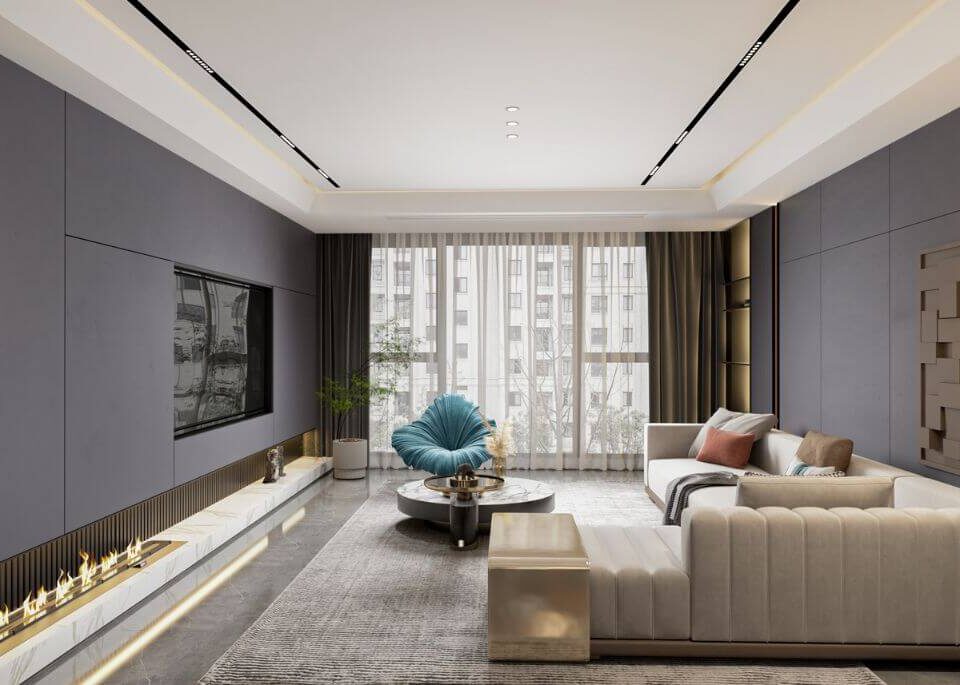
Choosing the Right Materials and Finishes for Your Space
July 30, 2023
Unwrapping the Elegance of Traditional Design
August 1, 2023Space Planning 101: Maximizing Functionality in Your Home
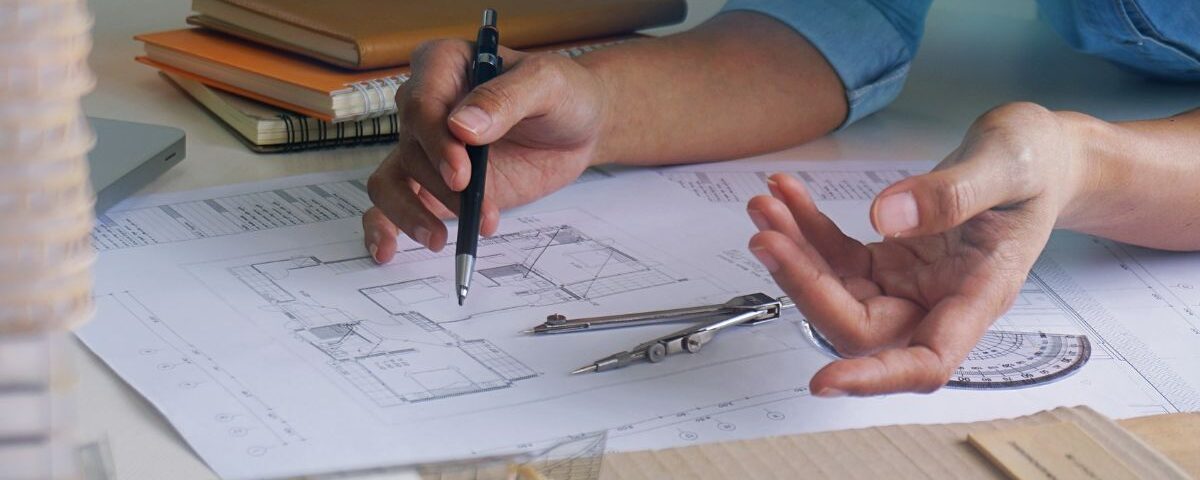
Are you feeling cramped in your own home? Do you wish your rooms flowed better? If you’re nodding yes, it’s time to consider the transformative power of “Space Planning.” As an integral part of interior design, effective space planning can maximize functionality and improve the aesthetic appeal of your home. Let’s delve into this fascinating subject.
Table of Contents
What is Space Planning?
Space planning is a critical step in the interior design process. It involves analyzing how space can be best used considering the room’s purpose, the occupants’ needs, and the furniture and accessories. Proper space planning ensures an efficient use of space while achieving a functional, attractive, and comfortable environment.
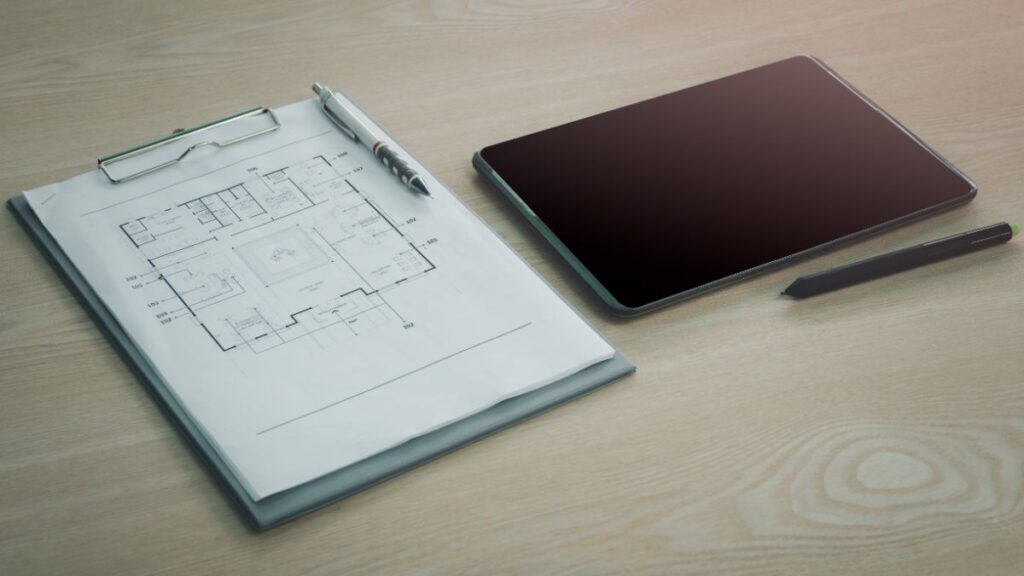
The Importance of Space Planning in Interior Design
In interior design, space planning is fundamental. It forms the basis for the room’s functionality, circulation, and aesthetics. Whether designing a residential or commercial space, the objective is to create a space that is not only visually appealing but also practical and comfortable.
Benefits of Effective Space Planning
Effective space planning can provide several benefits. It can increase the room’s functionality, create a feeling of spaciousness in a small room, improve the flow between spaces, and even contribute to the occupants’ wellbeing. By considering the purpose of the space and the needs of the occupants, you can create a design that is both beautiful and functional.
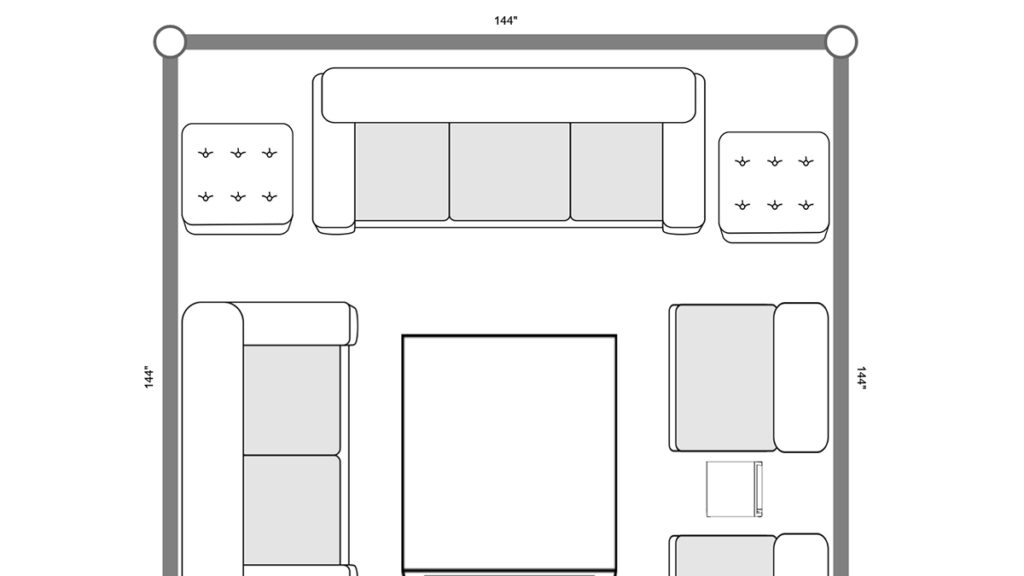
Key Elements of Space Planning
When it comes to space planning, certain key elements must be considered. These include:
Functionality : This involves considering the purpose of the room. For instance, a living room must have enough seating for family members and guests, and a workspace should cater to the user’s needs.
Flow : This refers to the movement pattern within the room. Proper flow ensures there’s enough space to move around comfortably without bumping into furniture.
Flexibility : A well-planned space should also be flexible, allowing for changes or adaptations over time. For instance, a guest room might also serve as a home office.
The Process of Space Planning
Space planning involves several steps:
Understanding the Space : This includes measuring the space and understanding its shape and size.
Determining the Function : What is the purpose of the space? Who will use it? How often will it be used? These are the questions that need to be answered at this stage.
Creating a Floor Plan : A detailed floor plan helps visualize the space better. This includes the location of doors, windows, and other structural elements, along with the placement of furniture and accessories.
Furniture Arrangement : This involves deciding where to place the furniture to create an effective layout. It considers factors like the room’s focal point, traffic flow, and balance.
Incorporating Design Elements : This includes selecting colors, textures, lighting, and other elements that contribute to the overall aesthetic of the space.
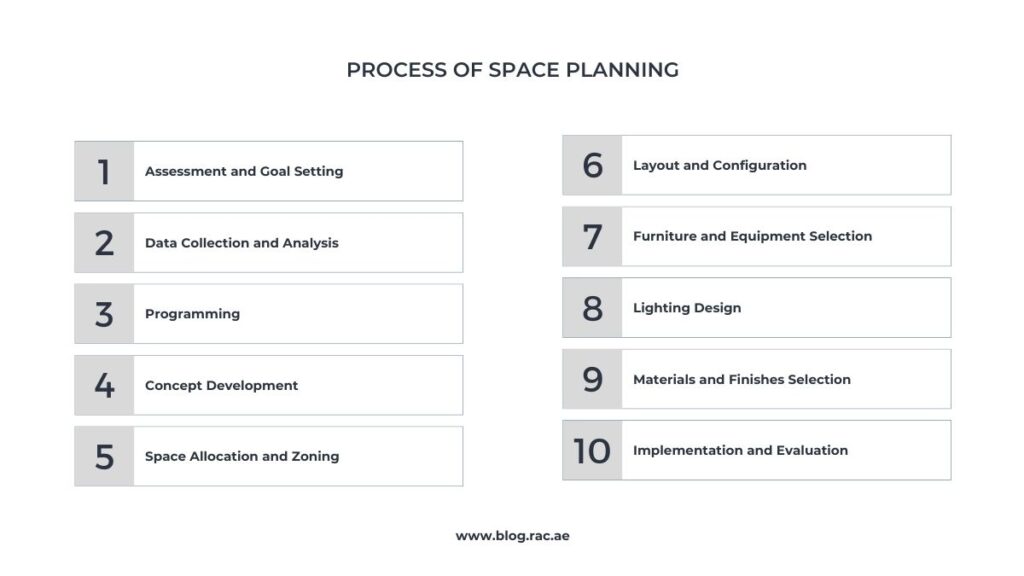
Space Planning in Different Rooms
Different rooms in the house require different approaches to space planning:
Space Planning in the Living Room : The living room is often the hub of social interaction in a home. Space planning here might involve ensuring ample seating, creating a focal point, and considering the traffic flow.
Space Planning in the Bedroom : A bedroom needs to be a relaxing, personal space. Thus, its space planning might involve ensuring a clear path from the bed to the door, considering storage needs, and creating a calm and serene ambiance.
Space Planning in the Kitchen : The kitchen is a high-traffic area where functionality is crucial. Space planning here might involve considering the work triangle (the distance between the sink, stove, and refrigerator), ensuring ample storage, and providing sufficient workspace.
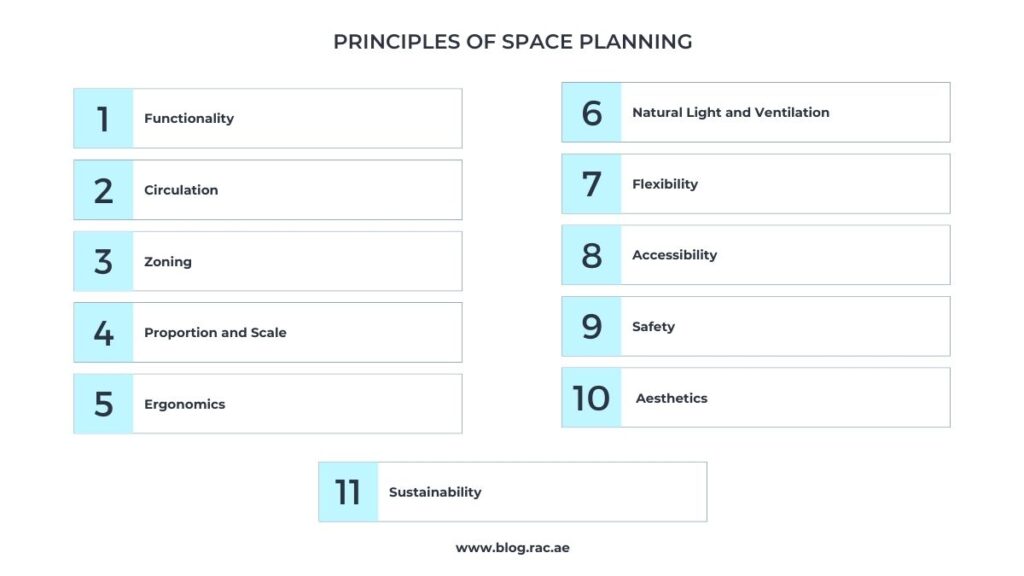
Space Planning Mistakes to Avoid
Common space planning mistakes include blocking natural light sources, ignoring the scale and proportion of furniture, and neglecting storage needs. Avoiding these pitfalls can significantly improve the functionality and aesthetic appeal of your space.
Tips to Enhance Space Planning Skills
To improve your space planning skills, consider educating yourself about interior design principles, practicing with different layouts, and experimenting with virtual design software.
Key Takeaways: The Essentials of Effective Space Planning
- Strategic Approach: Space planning involves a strategic process that ensures each room is functional and appealing.
- Adaptability: A well-planned space allows flexibility to adapt to changing needs without compromising comfort.
- Key Principles: Understanding the purpose, creating a floor plan, and arranging furniture carefully form the basis of successful space planning.
Conclusion
In conclusion, effective space planning is crucial in creating a functional and visually appealing interior space. It goes beyond just placing furniture and involves understanding the space, its purpose, and the occupants’ needs. With the right approach and skills, you can transform your living space into a well-planned, efficient and beautiful home.
FAQs
1. Why is flexibility important in space planning?
Flexibility is crucial because it allows spaces to adapt over time. For instance, a guest room may also function as a home office. A versatile space plan accommodates changing needs without sacrificing comfort or aesthetics.
2. What is space planning in interior design?
Space planning is a key element in interior design that involves analyzing and planning the space to use it effectively. It includes creating floor plans, determining furniture arrangement, and considering how the space will be used and by whom.
3. Why is space planning important?
Space planning is crucial as it ensures that a space is used efficiently and effectively. It determines how a room or a building’s space will function and how its occupants will move around in it. Effective space planning contributes to the comfort, utility, and aesthetics of living spaces.
4. What are the key elements of space planning?
Key elements of space planning include determining the function of the space, creating a floor plan, arranging furniture, and incorporating design elements like color, texture, and lighting.
5. What is the process of space planning?
The process of space planning involves understanding the space, identifying its function, creating a detailed floor plan, deciding on furniture placement, and selecting design elements to create a cohesive and functional space.
6. How can I avoid common space planning mistakes?
You can avoid common space planning mistakes by ensuring you don’t block natural light sources, not ignoring the scale and proportion of furniture, and not neglecting storage needs. It’s also beneficial to learn about design principles and use design tools or software.
7. What does space planning mean in the context of interior design?
Space planning is a systematic approach to arranging and organizing interior spaces effectively. It involves understanding a room’s purpose, considering the needs of its occupants, and designing a layout that balances furniture, movement, and accessories to maximize functionality and visual appeal.
8. Why should space planning be prioritized when designing interiors?
Space planning is vital because it ensures that each room functions efficiently. By strategizing the layout, furniture arrangement, and flow, you can achieve a space that is comfortable, practical, and visually engaging. This intentional planning also allows better circulation and ensures the space meets its purpose while enhancing the overall aesthetic.
9. What are the fundamental principles of space planning?
Space planning principles include defining the function of the room, developing a detailed floor plan, arranging furniture strategically to maintain flow and focal points, and incorporating design elements like color, lighting, and texture to create harmony and balance.
10. What is the comprehensive process involved in space planning?
The space planning process starts with understanding the room’s dimensions and layout. Next, it involves identifying the function, creating a detailed floor plan, arranging furniture to optimize traffic flow, and selecting complementary design elements. This ensures the space serves its purpose while remaining visually appealing.
11. How can you avoid common space planning errors?
Avoiding space planning mistakes involves ensuring that natural light isn’t obstructed, selecting furniture that’s proportionate to the room, and prioritizing storage solutions. Being mindful of the flow between spaces and learning about interior design principles can also help.
12. How should the living room be approached in space planning?
In the living room, focus on ensuring ample seating, creating a focal point, and maintaining a comfortable traffic flow. This approach ensures that the living room remains the hub for social interaction while being inviting and functional.
13. What makes bedroom space planning unique?
Bedrooms need a calming and personal touch. Prioritize clear pathways between the bed and door, incorporate sufficient storage, and create a serene atmosphere to foster relaxation and privacy.
14. What specific factors matter in kitchen space planning?
The kitchen needs careful planning due to its high-traffic nature. Consider the work triangle between the sink, stove, and refrigerator to improve efficiency. Ensure ample storage and workspace to make daily cooking routines seamless.
15. How can I enhance my space planning skills?
Develop your skills by learning the principles of interior design, experimenting with different layouts, and practicing with virtual design software. Hands-on experimentation helps you better understand the relationship between various elements and find creative solutions.

